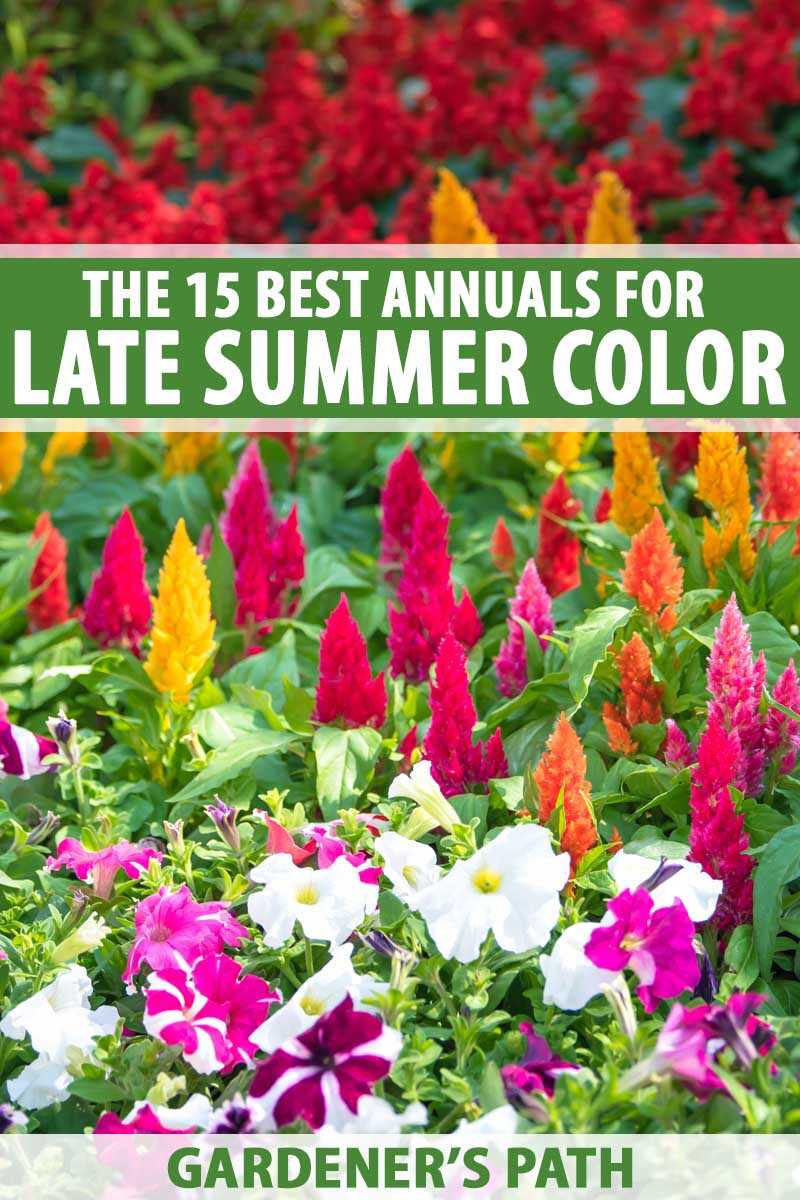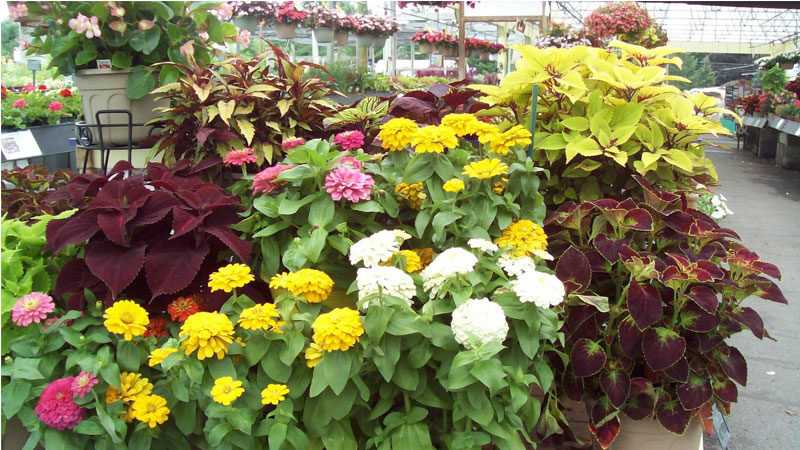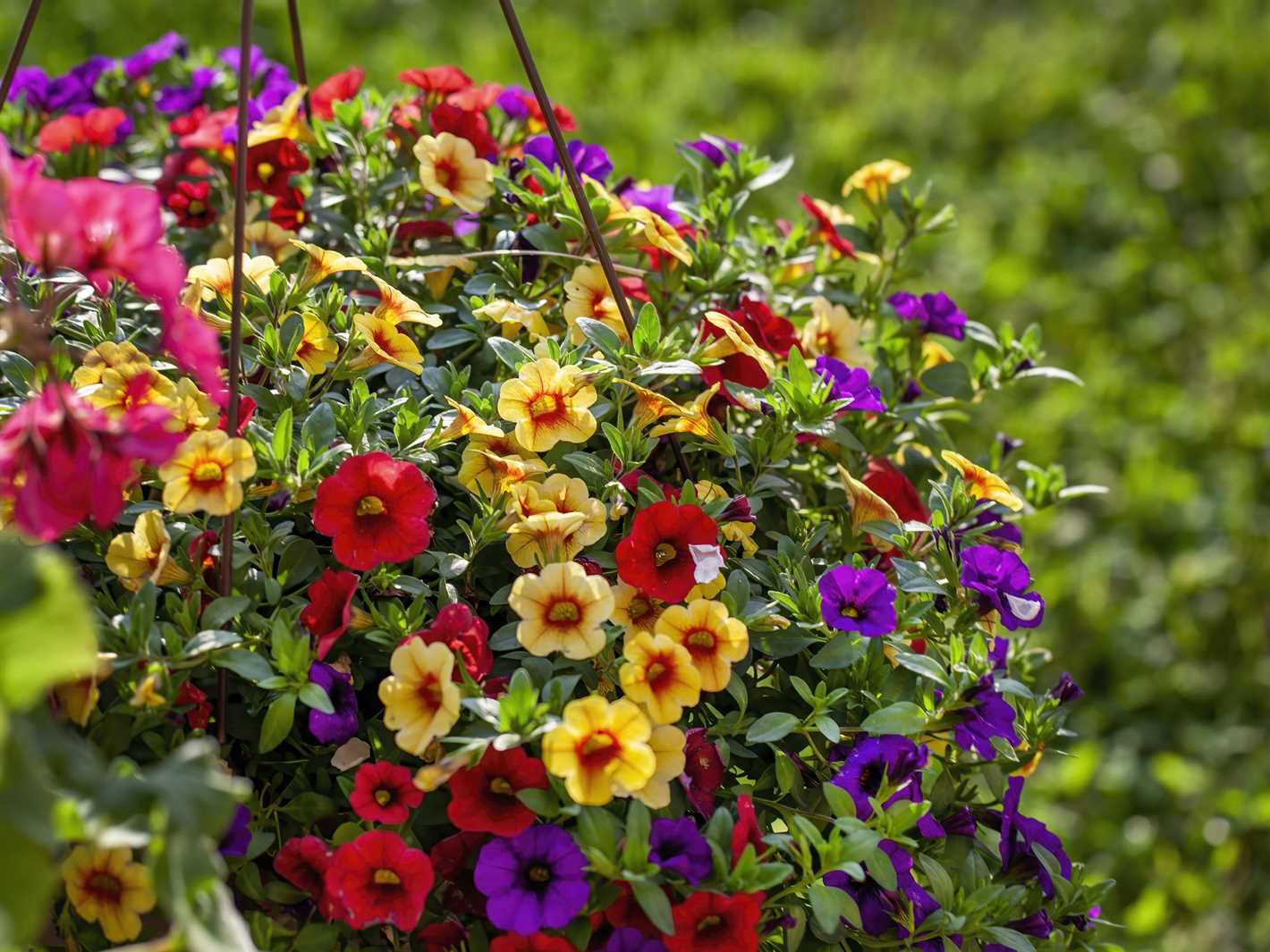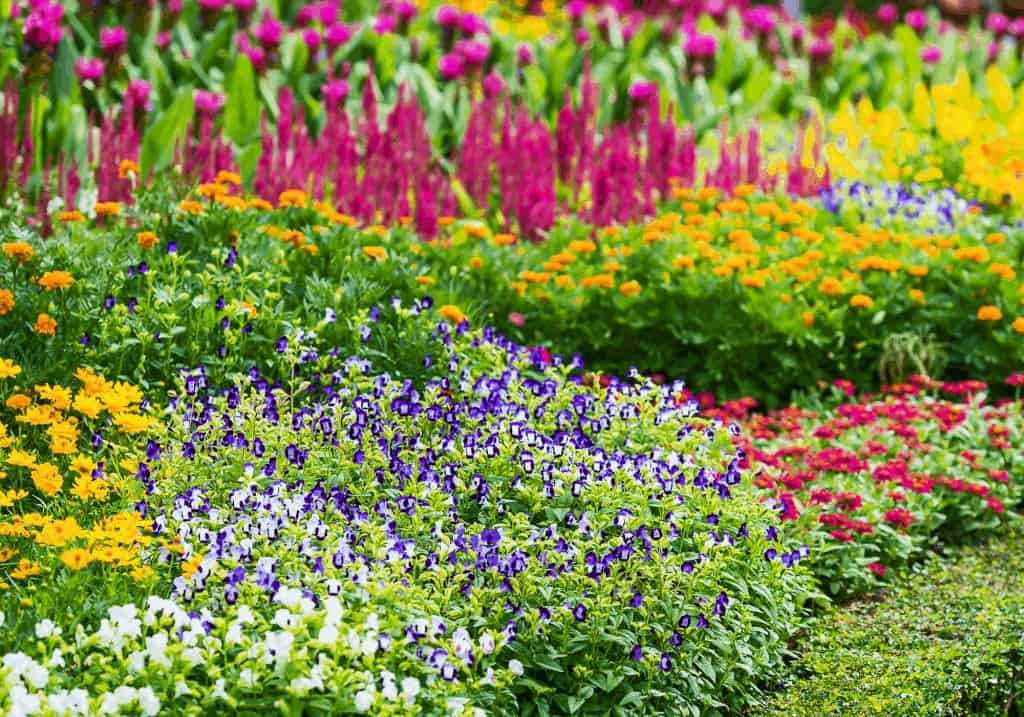- Best Blooming Annuals for a Stunning Display
- Petunias
- Marigolds
- Zinnias
- Impatiens
- Salvia
- Planting Annuals for a Colorful Garden
- 1. Choose the Right Location
- 2. Prepare the Soil
- 3. Plan for Height and Color
- 4. Water Properly
- 5. Deadhead and Prune
- 6. Fertilize as Needed
- 7. Consider Container Planting
- Add Vibrant Colors with These Flowering Annuals
- Petunias
- Marigolds
- Zinnias
- Impatiens
- Choose the Right Annuals for Your Garden Design
- Consider Your Climate
- Think About Sun Exposure
- Consider Height and Spacing
- Choose Complementary Colors
- Consider Maintenance
- Tips for Planting Blooming Annuals
- Choose the Right Location
- Prepare the Soil
- Choose Healthy Plants
- Spacing and Planting
- Watering and Mulching
- Fertilizing and Maintenance
- Enjoy the Blooms
- Annuals That Thrive in Different Climate Zones
- Zone 1-3
- Zone 4-6
- Zone 7-9
- Zone 10-12
- Create a Striking Display with These Annual Combos
- 1. Bold and Beautiful
- 2. Soft and Serene
- 3. Vibrant and Cheerful
- Extend Blooming Season with Succession Planting
- How Does Succession Planting Work?
- Benefits of Succession Planting
- Questions and Answers:
- What are annual plants?
- Which annual plants are known for their gorgeous blooming?
- When is the best time to plant annuals?
- Do annual plants require a lot of maintenance?
- Can I plant annuals in containers?
- How long do annual plants bloom for?
- Videos: 15 Annual flowers you should grow from seeds. This is why!
Spring is finally here, and what better way to celebrate than by planting some stunning annuals that will fill your garden with color and beauty? Whether you have a large backyard or just a small balcony, these gorgeous blooming flowers are sure to dazzle and delight. Now is the perfect time to get your hands dirty and create a breathtaking display that will last throughout the summer months.
One of the most popular annuals for spring planting is the vibrant and cheerful marigold. These flowers come in a range of colors, from bright orange and sunny yellow to deep red and rich gold. Not only do marigolds add a burst of color to any garden, but they also repel pests with their strong scent. Plant them in borders or containers for a stunning display that will last all summer long.
If you’re looking to add a touch of elegance to your garden, consider planting some petunias. These delicate flowers come in a variety of shades, including soft pinks, purples, and whites. Petunias are great for hanging baskets and window boxes, and they will cascade down and create a beautiful display of color. They are also highly fragrant, so you can enjoy their sweet scent every time you step outside.
For a more exotic look, why not try planting some impatiens? These tropical flowers come in a stunning array of colors, including vibrant pinks, purples, and oranges. They thrive in shady spots and are perfect for adding a pop of color to darker corners of your garden. Their unique shape and bold colors are sure to make a statement and draw admiring glances from neighbors and passersby.
So, don’t wait any longer! Grab your gardening gloves and get ready to plant these gorgeous blooming annuals. With their vibrant colors, delightful scents, and long-lasting blooms, your garden will be the envy of all who see it. Take advantage of the warmer weather and start creating a breathtaking display that will bring you joy all summer long.
Best Blooming Annuals for a Stunning Display
Annuals are a great way to add pops of color and texture to your garden. With so many options to choose from, it can be overwhelming to decide which annuals to plant for a truly stunning display. Here are some of the best blooming annuals that will make your garden the envy of the neighborhood.
Petunias
Petunias are a classic choice for a reason – they produce an abundance of beautiful flowers throughout the summer. With a wide variety of colors and patterns to choose from, you can easily find petunias that match your garden’s color scheme. Whether you choose trailing or upright varieties, petunias will add a burst of vibrant color to your garden beds or hanging baskets.
Marigolds

Marigolds are a popular choice for their bright, cheerful blooms. These annuals come in various shades of yellow and orange, adding a sunny and warm feel to any garden. Marigolds are also known for their ability to repel pests, making them a practical choice as well.
Zinnias
Zinnias are known for their large, showy flowers that come in a wide range of colors. These easy-to-grow annuals are perfect for adding a bold splash of color to your garden beds or borders. Zinnias are also attract pollinators like butterflies and bees, making them a great choice for gardeners looking to support their local ecosystem.
Impatiens
Impatiens are perfect for shady areas of the garden where other annuals might struggle. These plants produce an abundance of bright and colorful blooms, adding life to dark corners of your garden. With their low-maintenance nature, impatiens are a great choice for busy gardeners.
Salvia
Salvia is a versatile annual that comes in a variety of colors, including shades of purple, red, and blue. These plants are known for their tall spires of blooms that attract hummingbirds and butterflies. Salvia is also heat and drought tolerant, making it a great choice for hot and dry areas.
- Petunias
- Marigolds
- Zinnias
- Impatiens
- Salvia
When planning your stunning annual display, consider mixing and matching these varieties to create a visually striking combination. Don’t be afraid to experiment with different colors, heights, and textures to create a garden that is truly unique and breathtaking.
Planting Annuals for a Colorful Garden
Annual plants are a great way to add vibrant colors to your garden. These plants complete their life cycle within one year, so they offer a stunning burst of color for a specific season. Here are some tips for planting annuals to create a colorful garden:
1. Choose the Right Location
Before planting annuals, consider the specific needs of the plants you have selected. Some annuals prefer full sun, while others thrive in partial shade. Make sure to choose a location that provides the optimal amount of light for your chosen annuals.
2. Prepare the Soil
Prepare the soil by removing any weeds or debris and loosening it with a garden fork or tiller. Adding compost or organic matter to the soil can significantly improve its fertility and drainage. This will create a healthy environment for your annuals to grow and thrive.
3. Plan for Height and Color
When choosing annuals for your garden, consider their height and color. Mixing tall and short plants can add visual interest to your garden, while a variety of colors can create a vibrant and eye-catching display. You can also choose to plant annuals in groups or clusters for a more dramatic effect.
4. Water Properly
Proper watering is essential for the health and growth of annuals. Water the plants deeply, making sure the soil is moist but not waterlogged. Avoid overhead watering, as this can promote disease. Consider using a soaker hose or drip irrigation system to ensure the water is delivered directly to the roots.
5. Deadhead and Prune

To encourage continuous blooming, deadhead your annuals regularly by removing faded flowers. This will redirect energy back into producing new blooms. Additionally, prune any damaged or overgrown parts of the plants to maintain their shape and promote healthy growth.
6. Fertilize as Needed
Annuals are known for their fast growth and constant blooming, which requires a good amount of nutrients. Fertilize your annuals regularly with a balanced fertilizer to provide them with the necessary nutrients for healthy growth and vibrant blooms.
7. Consider Container Planting
If you have limited space or want to add color to your patio or balcony, consider planting annuals in containers. Choose containers with drainage holes and fill them with potting soil. Place the containers in a location that receives the appropriate amount of sunlight, and remember to water and fertilize them regularly.
By following these tips, you can create a colorful garden that will be the envy of your neighborhood. Planting annuals can be a rewarding experience, as their vibrant colors and beautiful blooms can transform any space into a visual masterpiece. So get out there and start planting annuals for a colorful and breathtaking garden!
Add Vibrant Colors with These Flowering Annuals
When it comes to adding vibrant colors to your garden, flowering annuals are the perfect choice. These plants are known for their ability to bloom beautifully and add a pop of color to any space. Whether you have a small backyard or a large garden, there are many flowering annuals to choose from that will suit your needs.
Petunias
- Petunias are one of the most popular flowering annuals and for a good reason. These plants come in a wide array of colors, including vibrant pinks, purples, and whites.
- They are easy to grow and can thrive in both containers and flower beds.
- Petunias are known for their ability to attract butterflies and hummingbirds, making them a great addition to any garden.
Marigolds
- Marigolds are another excellent choice for adding vibrant colors to your garden.
- These flowers come in shades of yellow, orange, and red, and can bloom throughout the summer months.
- Marigolds are also known for their pest-repellent properties, making them a popular choice for organic gardeners.
Zinnias
- Zinnias are beautiful flowers that come in a variety of colors, including bright pinks, oranges, and yellows.
- These flowers have a long blooming season, lasting from early summer until the first frost.
- Zinnias are easy to grow and can attract butterflies and bees to your garden.
Impatiens
- Impatiens are shade-loving annuals that come in a range of colors, including pinks, purples, and whites.
- These plants are perfect for adding color to shady spots in your garden where other flowers may not thrive.
- Impatiens are low-maintenance and can be easily grown in containers or flower beds.
Add a splash of color to your garden this season with these beautiful flowering annuals. Whether you choose petunias, marigolds, zinnias, or impatiens, you can’t go wrong with these vibrant and eye-catching plants. Happy gardening!
Choose the Right Annuals for Your Garden Design
When designing your garden, choosing the right annuals can make all the difference. Annual flowers are a great addition to any garden because they bloom for only one season, allowing you to experiment with new colors and varieties each year. Here are some tips to help you choose the right annuals for your garden design:
Consider Your Climate
Before selecting annuals for your garden, it’s important to consider your climate. Different plants thrive in different climates, so choose annuals that are well-suited to your region. If you live in a hot and dry climate, opt for drought-tolerant annuals such as zinnias or marigolds. On the other hand, if you live in a cooler climate, choose annuals that can withstand frost, such as pansies or snapdragons.
Think About Sun Exposure
Another factor to consider when choosing annuals for your garden is the amount of sun exposure they will receive. Some annuals, like petunias and geraniums, require full sun to thrive, while others, such as impatiens and begonias, prefer shade. Take note of the sun exposure in your garden and select annuals that will thrive in those conditions.
Consider Height and Spacing
When designing your garden, it’s important to consider the height and spacing of your annuals. Some annuals, like sunflowers or hollyhocks, can grow quite tall, so they should be placed towards the back of your flower beds. Others, like lobelia or alyssum, are more compact and can be placed towards the front. Make sure to read the plant tags or do some research to determine the mature height and spacing requirements of the annuals you choose.
Choose Complementary Colors
One of the most fun aspects of choosing annuals is selecting colors that complement each other and your overall garden design. Consider the color scheme of your garden and select annuals that will add pops of color and enhance the overall aesthetic. You can choose complementary colors, like purple and yellow, or create a monochromatic look with different shades of the same color.
Consider Maintenance
Finally, it’s important to consider the maintenance requirements of the annuals you choose. Some annuals, like petunias or marigolds, are low-maintenance and require little watering or feeding. Others, like geraniums or dahlias, may require more attention and regular deadheading. Be sure to choose annuals that fit within your gardening capabilities and the amount of time you are willing to dedicate to maintenance.
By considering your climate, sun exposure, height and spacing, complementary colors, and maintenance requirements, you can choose the right annuals for your garden design. Experiment with different varieties and colors each year to create a breathtaking display that will impress both you and your neighbors!
Tips for Planting Blooming Annuals
Planting blooming annuals can add a pop of color and beauty to any garden or outdoor space. Whether you are a beginner or an experienced gardener, here are some tips to help you successfully plant blooming annuals:
Choose the Right Location
Before planting blooming annuals, it is important to choose the right location. Most annuals need at least 6 hours of sunlight per day, so select a spot that receives adequate sunlight. Additionally, consider the soil conditions and drainage in the area. Make sure the soil is well-draining to prevent waterlogging, which can lead to root rot.
Prepare the Soil
Preparing the soil before planting is crucial for the success of your blooming annuals. Remove any weeds, rocks, or debris from the planting area. Loosen the soil with a garden fork or tiller to improve the drainage and aeration. Incorporate organic matter, such as compost or well-rotted manure, to enrich the soil and provide essential nutrients.
Choose Healthy Plants
When purchasing blooming annuals, choose healthy plants that show no signs of disease or pest damage. Look for plants with sturdy stems, vibrant leaves, and buds that are ready to open. Avoid plants with wilted leaves or yellowing foliage, as they may be stressed or unhealthy.
Spacing and Planting
Proper spacing is important to allow each plant enough room to grow and thrive. Check the plant label or seed packet for specific spacing recommendations. Dig a hole for each plant that is slightly larger than the root ball. Gently remove the plant from its container and place it in the hole. Backfill with soil, firming gently around the base of the plant.
Watering and Mulching
Once you have planted your blooming annuals, water them thoroughly to settle the soil and encourage root growth. Provide enough water to moisten the entire root zone. After watering, apply a layer of mulch around the plants to help retain moisture, suppress weeds, and regulate soil temperature.
Fertilizing and Maintenance
Regular fertilization is important for the healthy growth and abundant blooming of annual plants. Choose a balanced fertilizer and follow the instructions on the packaging for application rates and timing. Remove spent flowers regularly to encourage the production of new blooms. Monitor the plants for any signs of pests or diseases and take appropriate action if necessary.
Enjoy the Blooms
Once your blooming annuals are established, sit back and enjoy their beautiful display of colors and fragrances. Regularly deadhead the faded flowers to prolong the blooming period and promote continuous flowering. With proper care and maintenance, your blooming annuals can bring joy and beauty to your garden all season long.
Annuals That Thrive in Different Climate Zones
When choosing annuals for your garden, it’s important to consider the climate zone you live in. Different plants thrive in different conditions, so it’s essential to choose ones that are well-suited to your area. Here are some annuals that thrive in different climate zones:
Zone 1-3
- Pansies: Pansies are cold-tolerant annuals that can withstand freezing temperatures. They come in a variety of colors and are known for their cheery faces.
- Violas: Violas are similar to pansies and also thrive in cold climates. They are smaller in size and have charming, delicate flowers.
- Iceland Poppies: Iceland poppies are hardy annuals that can withstand chilly temperatures. They add a pop of color to early spring gardens.
Zone 4-6
- Marigolds: Marigolds are popular annuals that are easy to grow and thrive in moderate climates. They come in a variety of colors and add vibrant splashes to any garden.
- Zinnias: Zinnias are heat-tolerant annuals that bloom throughout the summer. They come in a wide range of colors and attract butterflies to the garden.
- Cosmos: Cosmos are versatile annuals that can thrive in a range of climates. They have beautiful daisy-like flowers that bloom from summer to fall.
Zone 7-9
- Impatiens: Impatiens are shade-loving annuals that thrive in warm climates. They come in a variety of colors and are perfect for adding color to shady areas of the garden.
- Salvia: Salvia is a hardy annual that thrives in hot climates. It has tall spikes of vibrant flowers and attracts hummingbirds and butterflies.
- Pentas: Pentas are heat-tolerant annuals that bloom all summer long. They come in a range of colors and are great for attracting butterflies and hummingbirds.
Zone 10-12
- Geraniums: Geraniums are popular annuals that thrive in warm climates. They come in a variety of colors and are known for their attractive flowers and foliage.
- Bougainvillea: Bougainvillea is a tropical annual that loves warm climates. It has vibrant, eye-catching flowers and can be trained to climb or trail.
- Hibiscus: Hibiscus is a stunning annual that thrives in tropical conditions. It has large, showy flowers that come in a variety of colors.
Remember to check the specific planting and care instructions for each annual to ensure they will thrive in your climate zone. With the right plants, you can create a breathtaking display in your garden, no matter where you live!
Create a Striking Display with These Annual Combos
When it comes to creating a stunning display in your garden, combining different annuals can make a big impact. Here are some striking annual combinations that are sure to wow your neighbors and friends:
1. Bold and Beautiful
- Salvia: With its vibrant purple flowers, salvia adds a pop of color to any garden bed.
- Zinnia: Zinnias come in a variety of bold colors, making them the perfect complement to salvia.
- Marigold: With their bright orange and yellow blooms, marigolds add a warm touch to this combination.
2. Soft and Serene

- Alyssum: Alyssum’s delicate white or purple flowers create a soft and inviting look.
- Petunia: Petunias come in a wide range of colors and their small, trumpet-shaped blooms add a touch of elegance.
- Verbena: With its clusters of tiny flowers, verbena adds a pop of color and texture to this combination.
3. Vibrant and Cheerful
- Geranium: Geraniums are known for their bright red, pink, and white blooms, adding a cheerful vibe to any garden.
- Calendula: With its sunny yellow and orange flowers, calendula adds a burst of color to this combination.
- Lobelia: Lobelia’s delicate blue flowers create a beautiful contrast to the bold colors of geraniums and calendula.
By combining these annuals in your garden beds or containers, you can create a striking display that will have everyone in awe. Experiment with different combinations and have fun creating your own unique masterpiece!
Extend Blooming Season with Succession Planting
Succession planting is a gardening technique that allows you to extend the blooming season of your annual flowers. By carefully planning and timing your plantings, you can enjoy a continuous display of beautiful blooms throughout the growing season.
How Does Succession Planting Work?
Succession planting involves planting different varieties of annual flowers at different times. This ensures that as one variety finishes blooming, another variety is ready to take its place, creating a seamless transition of color and beauty in your garden.
Here are a few steps to help you get started with succession planting:
- Choose a variety of annual flowers: Select a mix of early, mid-season, and late-season bloomers. This will ensure that you have flowers blooming at different times throughout the season.
- Create a planting schedule: Determine the best planting times for each variety of flowers. Consider factors such as the average frost-free date in your region and the recommended planting timeline for each flower variety.
- Prepare the soil: Before planting, make sure the soil is well-prepared and enriched with organic matter. This will provide the necessary nutrients for healthy plant growth and blooming.
- Plant at the right time: Follow your planting schedule and sow seeds or plant seedlings at the appropriate times for each variety. This will ensure that each batch of flowers is ready to bloom when the previous one starts to fade.
- Maintain proper care: Throughout the growing season, provide adequate water, sunlight, and fertilization to your flowers. Regularly deadhead spent blooms to encourage new growth and prolong the blooming period.
- Monitor and adjust: Keep a close eye on your flowers and make adjustments to your succession planting schedule as needed. Depending on weather conditions and other factors, you may need to make changes to optimize blooming times.
Benefits of Succession Planting

Succession planting offers several benefits for gardeners:
- Extended blooming season: By spreading out your plantings, you can enjoy a longer period of blooming flowers in your garden.
- Continuous color and beauty: Succession planting ensures that your garden always has something in bloom, providing a constant source of color and beauty.
- Better use of space: By rotating your plantings, you can maximize the use of garden space and prevent bare patches.
- Increased pollinator activity: A succession of blooming flowers will attract a diverse range of pollinators to your garden, benefiting both your flowers and the ecosystem.
With succession planting, you can create a breathtaking display of blooming annual flowers that will delight you and impress your visitors. Start planning your succession planting schedule today and enjoy a longer blooming season in your garden!
Questions and Answers:
What are annual plants?
Annual plants are plants that complete their life cycle in one year. They grow from seed, flower, produce seeds, and then die within a single growing season.
Which annual plants are known for their gorgeous blooming?
There are several annual plants that are known for their gorgeous blooming, such as petunias, marigolds, zinnias, impatiens, and cosmos.
When is the best time to plant annuals?
The best time to plant annuals is in the spring, after the last frost, when the soil has warmed up and the risk of frost has passed.
Do annual plants require a lot of maintenance?
Annual plants generally require some maintenance, such as regular watering, fertilizing, and deadheading. However, the level of maintenance can vary depending on the plant.
Can I plant annuals in containers?
Yes, annuals can be planted in containers. In fact, many annual plants, such as petunias and impatiens, are well-suited for container gardening.
How long do annual plants bloom for?
The blooming period of annual plants can vary depending on the plant species and environmental conditions. Some annuals may bloom for several weeks, while others may continue to bloom throughout the summer and into the fall.







